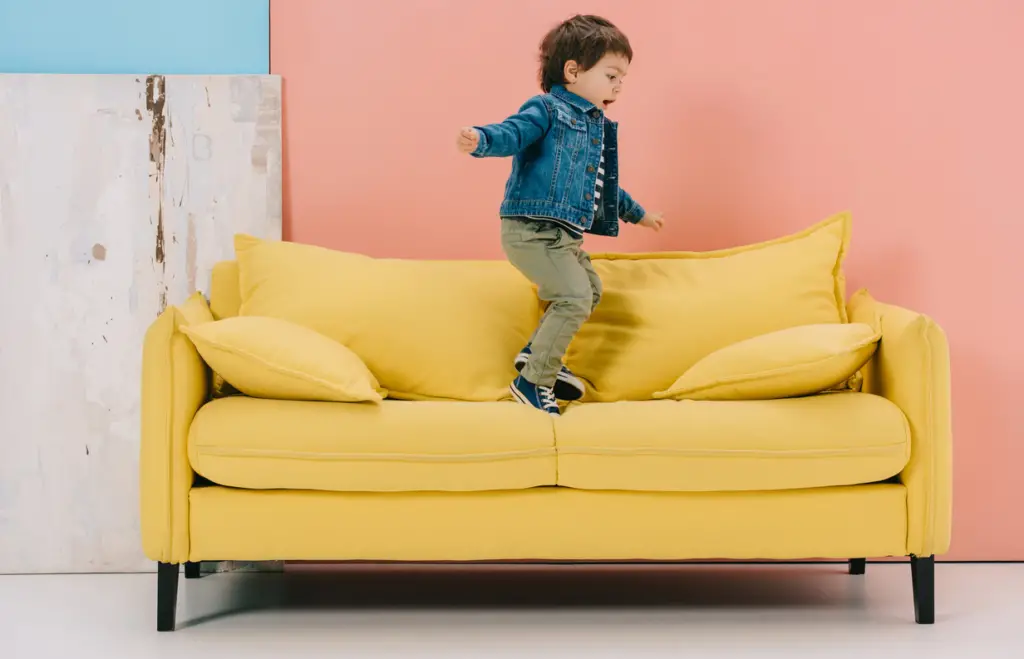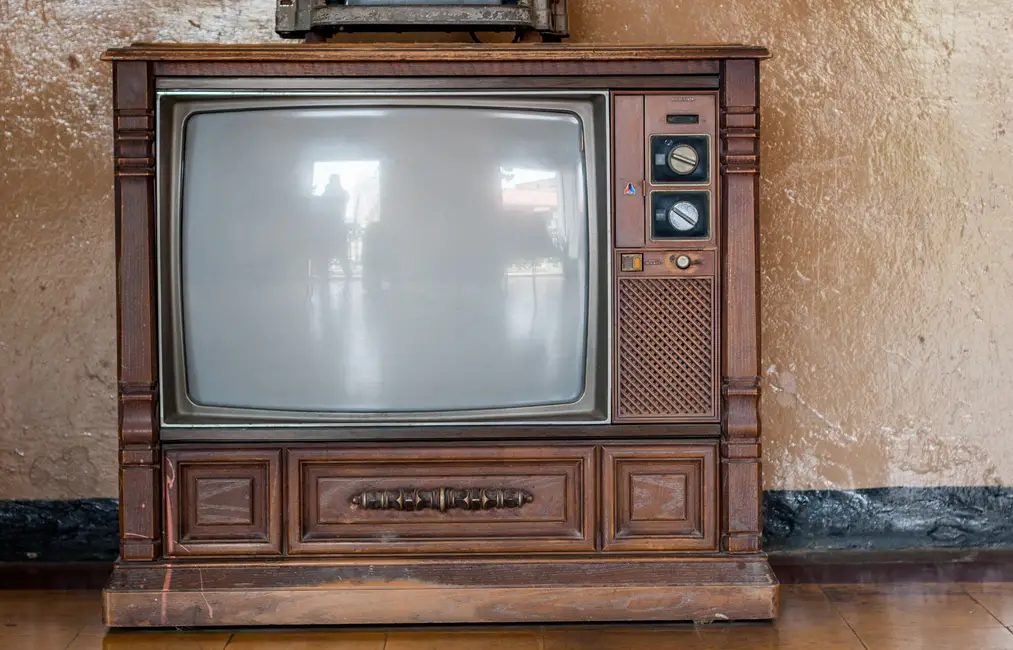Remember when the world was full of magic and mystery? When we were young, our imaginations filled in the gaps of our understanding with explanations that, looking back, were downright bizarre. Yet there’s something comforting about those childhood beliefs—so much so that a tiny part of us still clings to them, even as adults who should definitely know better. Let’s take a nostalgic journey back to those innocent assumptions that somehow still make us pause, just for a second, in our grown-up lives.
1. The Floor is Actually Lava

Those living room cushions weren’t just cushions—they were life-saving islands in a sea of molten rock. The carpet, tile, or hardwood beneath our feet could transform into bubbling lava at a moment’s notice, requiring immediate elevation to safety. Most of us organized entire afternoons around this premise, leaping from furniture to furniture with death-defying determination. Learning Corner actually posits that there are several health benefits to promoting this game for young children.
Even now, as full-grown adults with mortgages and back problems, something in us hesitates before stepping on that one creaky floorboard at night. We might joke about it with our children or grandchildren, but let’s be honest—haven’t you occasionally taken an unnecessarily long step to avoid a suspicious-looking tile? The lava threat never completely disappears from our subconscious.
2. Swallowed Seeds Grow Inside You

Our parents’ warnings about watermelon or apple seeds took root in our young minds with alarming persistence. We truly believed that swallowing a seed would result in branches sprouting from our ears or a full-grown plant taking over our insides. Some of us even had nightmares about turning into walking gardens after accidentally ingesting a cherry pit. This myth resonated particularly hard on Childhood Beliefs, which also puts further into perspective just how silly some of our thoughts were as kids.
Decades later, we still find ourselves automatically picking seeds out of fruit or spitting them with precision. When explaining to our grandchildren why they shouldn’t swallow seeds, we might catch ourselves almost sharing the old myth before switching to proper biology. Yet that flash of childhood worry—that brief “what if?”—never completely disappears when we accidentally gulp down a grape seed.
3. Stepping on Cracks Affects Your Mother’s Spine

“Step on a crack, break your mother’s back”—a playground rhyme that transformed ordinary sidewalks into hazardous moral tests. We’d carefully navigate the concrete grid, sometimes with exaggerated high steps, worried that one misstep might send Mom to the hospital. The pressure was enormous, especially when rushing to catch the school bus or racing home before dark. The exact origin of this peculiar belief varies by source, but HowStuffWorks traces the saying through a surprising amount of history and geography.
Now we laugh at such superstitions while still finding ourselves, on occasion, adjusting our stride to avoid those sidewalk seams. It happens automatically, like muscle memory from decades ago, and we might not even notice until someone points it out. Something deep within our programmed childhood behavior never completely unlearned the crack-avoidance protocol, especially when walking with our thoughts elsewhere.
4. The Ice Cream Truck Only Plays Music When Out of Ice Cream

This particular childhood deception ranks among the most brilliant parental fibs ever created. Many of us grew up genuinely believing that the cheerful melody of the ice cream truck was actually a sad announcement that all the treats were gone. Our parents would console us with remarkable acting skills, saying “Oh no, they’re all out today, maybe next time,” while saving both money and our sugar intake.
The day we learned the truth—whether through neighborhood kids or our own detective work—was a revelation comparable to discovering certain holiday figures weren’t real. As parents and grandparents ourselves now, some of us have perpetuated this harmless falsehood, watching our children’s faces fall with disappointment while stifling our guilty grins. The music still triggers that momentary childhood disappointment before our adult brains catch up.
5. Holding Your Breath Through Tunnels Grants Wishes

Tunnels weren’t just engineering marvels—they were magical portals where wishes could come true if you just had enough lung capacity. We’d spot an upcoming tunnel, quickly think of our greatest desire, and then gasp a massive breath as the darkness enveloped the car. Emerging on the other side, light-headed but triumphant, we were certain our wish was now in the cosmic processing queue.
While we might chuckle at such superstitions now, many of us still feel that reflexive urge to inhale deeply when approaching a tunnel. Sometimes we even go through with it, holding our breath for old time’s sake or teaching the tradition to younger generations. In moments of genuine wanting, some small part of us wonders if maybe, just maybe, there was something to it after all.
6. The Back Seat Light Blinds the Driver

“Turn that light off—I can’t see the road!” became the universal parental response to reading books in the car after dark. We fully accepted that the small dome light above our back seat was powerful enough to completely blind the driver, potentially causing catastrophic accidents. The logic was never questioned; we simply internalized that car interior lights were dangerous at night.
Most of us became drivers ourselves before realizing this wasn’t exactly accurate—more an exaggeration to stop distractions or save the car battery. Yet somehow, when driving at night with our own families, we find ourselves automatically repeating the same warning when someone flips on that light. The imagined danger feels oddly real, as though our childhood belief hardwired itself permanently into our driving habits.
7. Making Faces Gets Them Stuck That Way

Crossing our eyes, puffing our cheeks, or sticking out our tongues came with serious warnings about permanent facial paralysis. Parents and grandparents worldwide convinced us that a gust of wind or the stroke of a clock could freeze our features mid-grotesque expression forever. The threat was specific enough to be believable yet vague enough that we couldn’t quite disprove it.
Despite years of education and life experience telling us otherwise, many of us still feel a fleeting moment of superstitious worry when making particularly outlandish faces. We’ve passed down the same warning to youngsters, sometimes catching ourselves mid-sentence and wondering why this particular myth has such staying power. Perhaps it’s the lingering childhood fear of being permanently marked by a moment of silliness that still resonates with our adult insecurities.
8. The TV Knows When You’re Watching

Television sets seemed almost sentient, especially when something inappropriate would appear precisely when our parents walked into the room. We developed elaborate theories about how the TV “knew” when adults were present, changing its content accordingly to get us in trouble. Some of us even believed the people inside the TV could see us watching them, leading to hasty clothing adjustments when changing channels.
This peculiar belief has evolved rather than disappeared, transforming into modern concerns about smart devices listening to our conversations. When advertisements eerily align with recent discussions, that old childhood suspicion flares up again—”It’s watching me!” The technology has changed, but the uneasy feeling that our entertainment devices have minds of their own remains surprisingly resilient.
9. Swallowed Gum Takes Seven Years to Digest

The accidental gulping of gum was once considered a seven-year digestive commitment according to the childhood medical community. We envisioned the sticky wad stubbornly residing in our stomachs, perhaps gradually growing as more accidentally-swallowed pieces joined the original mass. Some kids even kept mental tallies of how many pieces they’d swallowed, calculating when their bodies would finally be gum-free.
Though we now understand that gum passes through our systems like most other indigestible items, there’s still that momentary pause when we accidentally swallow a piece. A tiny voice from our past whispers, “That’s staying with you until 2032,” before rational thought takes over. The mythical seven-year timeline somehow feels more credible than the actual digestive facts we’ve since learned.
10. Mixing Pop Rocks and Soda Makes Your Stomach Explode

The urban legend about a certain child star meeting an untimely end through this deadly candy-beverage combination spread through playgrounds like wildfire. We genuinely believed that the carbon dioxide released from both products would create enough pressure to cause a catastrophic internal explosion. Some brave souls tested the theory (usually with considerable distance between themselves and concerned friends), becoming playground legends in the process.
Despite understanding the scientific impossibility of this candy-induced demise, many of us still experience a brief moment of childhood conditioning when witnessing someone combine these items. The imagined pressure building, the stomach expanding like a balloon—these mental images remain surprisingly vivid decades later. Even explaining the myth’s falsehood to younger generations comes with an almost irresistible urge to add, “But still, be careful.”
11. The Swimming Pool Has Dye That Reveals Bathroom Accidents

The mythical “urine-detecting dye” struck fear into the hearts of young swimmers everywhere. We believed pool managers had access to a special chemical that would create a vivid cloud around anyone who relieved themselves in the water, publicly shaming them before all other swimmers. This invisible surveillance system kept us making regular trips to the chlorine-scented restrooms despite the inconvenience.
As adults, we recognize this as a clever behavioral control mechanism rather than actual pool chemistry. Yet many of us have perpetuated the myth with our own children or grandchildren, finding it an effective deterrent despite our better knowledge. At public pools, there’s sometimes still that tiny, irrational moment of concern—”What if they’ve developed that technology now?”—before our rational minds dismiss the thought.
12. Crusts Make Your Hair Curly (or Straight)

Depending on your family’s preferred hair texture, bread crusts were presented as either magical curl enhancers or curl eliminators. This peculiar nutritional claim had children either eagerly devouring or carefully dissecting their sandwich perimeters based on their desired hairstyle outcomes. Some families even had different crust rules for different children, depending on each kid’s natural hair tendencies.
Though we now smile at this obvious fabrication designed to reduce food waste, many of us still feel a momentary connection between crusts and hair even decades later. When trimming crusts for grandchildren’s sandwiches or ordering at restaurants, that old correlation briefly flickers in our minds. The childhood programming runs surprisingly deep, connecting bread edges to beauty standards in some ancient neural pathway.
13. Cracking Your Knuckles Causes Arthritis

The distinctive popping sound of knuckle-cracking was presented to us as a direct path to arthritic hands in old age. Parents and teachers warned that each satisfying crack was destroying our finger joints, ensuring a future of pain and stiffness. The specificity of this particular consequence made it especially believable to our young minds.
Despite numerous studies debunking this connection, many of us still experience a twinge of that old conditioning when hearing someone crack their knuckles. We might even catch ourselves repeating the warning to younger generations before sheepishly admitting there’s no scientific basis for it. Something about this particular childhood belief remains lodged in our consciousness, resistant to all evidence to the contrary.
14. Sitting Too Close to the TV Ruins Your Eyesight

The dreaded parental call—”Back up from that television!”—is embedded in our generational memory as deeply as any cultural touchstone. We were thoroughly convinced that the radiation, rays, or general “screen energy” would permanently damage our vision if we watched from too close a distance. Some families even had marked lines on the floor indicating the minimum safe viewing distance.
Now, as we squint at our smartphones mere inches from our faces for hours daily, the irony isn’t lost on us. Yet many still feel that ingrained discomfort seeing children with their noses practically touching television screens. Despite knowing better, something in us still believes prolonged close-range viewing can’t possibly be good for developing eyes, keeping this particular childhood belief stubbornly alive in our modern world.
These childhood misconceptions might seem silly in the harsh light of adulthood, but they represent something precious—a time when the world was full of mystery, magic, and simple explanations. Perhaps we cling to them not because we truly believe anymore, but because they connect us to our younger, more innocent selves. In a world that often feels overwhelmingly complicated, there’s comfort in remembering when avoiding cracks in the sidewalk was our biggest concern, and holding our breath through a tunnel might actually make our wishes come true.


